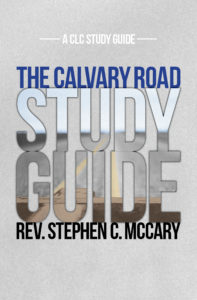From the Author: Seven Signs Your Church May Be Covered in Wallpaper Worship
Author of Wallpaper Worship, Daniel Byram shares his insights on church worship.
Wallpaper music—music that is piped into a dentist’s office or a supermarket—is pleasant to the ear but does little for the spirit. Wallpaper worship has taken our churches by storm. On any given Sunday, walk into an evangelical church and watch the congregants observing as opposed to participating. As sincere as the musicians seem and as great as the music sounds, many people in congregations are not connecting to the songs. In fact, the music is so slick and professional that it is designed to be listened to; participation is optional, except for the brave few who might lift their voice. And, house mixes are so loud and overproduced that congregants will not be heard anyway. So why try?
It doesn’t seem to matter to the musicians. Wallpaper worship is like a code language, telling us in the seats, “It isn’t important to us that you participate. We’ll do this for you.” In his classic book Worship Is A Verb, Robert Webber says that worship is not “something done to us or for us, but by us.”
From what I have witnessed as I have traveled the world visiting churches, Christian conference centers, and military chapel services, churchgoers are experiencing wallpaper worship in congregations as large as ten thousand and as small as one hundred.
Many across the landscape of present-day church leadership say that this kind of non-participatory experience is what the current culture demands. As well-meaning as that explanation is, it ignores the bigger picture. The issue is rooted in a fundamental point that what we have been calling worship may not be worship at all. The church has redefined worship to fit a cultural model instead of a biblical one, much to the ignorance of many newly churched believers and to the dismay of mature worshippers who have been around long enough to know the difference.
Finding solutions to the problem of wallpaper worship starts with recognizing that there is a problem. Here are seven signs that your church might be covered in wallpaper worship:
Congregants aren’t participating, they are watching. There are many reasons for this, which I address in my book, but for now it simply needs to be recognized and faced as a reality. The leadership team of pastors at a church I recently visited never knew this was happening. Why didn’t they know? The pastors all sat in the front row and were unaware that when the band started playing, half the congregants (seated behind them out of view) were walking out to the lobby to have coffee and visit. “Know well the condition of your flocks” (Proverbs 27:23).
The musicians are mostly playing songs that congregants don’t know. When this happens, it conveys the message that if you aren’t listening to syndicated Christian radio during the week, you are left out. I know a lot of dedicated Christians who love to sing, but listen to pop, jazz, classical, or talk radio. Too bad for them. There used to be a common body of songs every Protestant church goer knew for generations. Many still do, but if five out of six songs chosen for a worship service were written and released within the last eighteen months, is it any wonder why people aren’t singing?
The “worship leader” (aka the lead singer of the band) never invites anyone to sing along. The title of worship leader has a connotation that the person possessing the title is recognized as a leader because of a body of people following him or her. In many cases, worship leaders are simply leading a band of musicians; the congregation is not following them. The slogan for a military infantry officer who leads a platoon of soldiers is “Follow me.” Leaders have followers.
Congregants are chatting or walking around. It is interesting how this never happens during a sermon but is allowed during a musical segment. It could be that these times are considered optional. Again, this is solved through proper leadership. A football team understands very clearly that their destination is a line at the end of the field called the goal line. If leaders have no idea where the goal line of worship is, it is likely that their followers will never reach it.
Communion is ambiguous. If the elements of Communion and their meaning are never explained, people are left to figure it out on their own. I’ve seen churches where people are given Communion elements with the unspoken option of taking Communion in the privacy of their seat, in the hallway, in the bathroom, or in their car when they are leaving. Another option is for folks to trot over to a section of the sanctuary where Communion is offered while something else is taking place, with no explanation of what is happening “over there.” Ambiguity experienced in something as fundamental as Communion will likely be seen in other matters within the church as well. Ambiguity in worship is a sign of wallpaper worship.
Many congregants arrive after the music. If you are a leader or pastor, try this: Hang out in the foyer of the church for a few months and watch how many congregants arrive late. Then, go a step further and ask them why they are arriving late. If they are honest with you, you may discover what many churchgoers have known for years: Some congregants skip the music portion of the service, feeling frustrated that they are being used simply as an audience for weekend performers. Christian worshippers want to be led to participation, rather than watch others participate in their stead.
Arrogance of Artistry. I have been told stories by congregants who try to convey to a leader their frustrations with worship services that are nothing more than exercises in passive observation, only to be dismissed as out of touch—or worse, misunderstood as trying to insult the leader. When a leader (especially a musician) storms off in a huff, it is simply arrogance of artistry. A well-known Christian hit songwriter friend of mine said to me, “It’s not the style of music we are using, nor is it the quality of performance that offends me. It’s the vibe coming from the platform.” If a worship platform gives out a message of, “Listen to us and look at our gadgets,” you can bet that the worshippers are simply lining the walls to provide a weekly audience for performers who otherwise would not have one. Congregants understand that. And when they are dismissed as being out of touch by those who lead them, it begs the question: Just who is the one who is out of touch? Arrogance is a fruit of wallpaper worship. Wallpaper worship is a fruit of arrogance. The two feed off each other. We may be filing seats and parking lots, but God is actually resisting us (see James 4:6).
If your church experience reflects any of these seven traits, it may be time for some soul searching.
Wallpaper worship doesn’t encourage participation; it isn’t designed to even allow participation. It is unconnected to its heritage and lacks power of the Spirit. It is an imposter of what Jesus describes as worshipping “in spirit and truth.” Wallpaper worship is cyclical. It thrives in times of prosperity but dies in seasons in persecution.
When the hows of worship become more important than the whys of worship, we have missed the point of worship itself. I personally do not think this is what anyone in the body of Christ wants. But history proves it is a common trap that stumbles each generation in the church.
So take heart: Whether you are a leader or a weekly worshipper, you do not have to tolerate wallpaper worship. In John 4:23, Jesus says, “But the hour is coming, and is now here, when the true worshipers will worship the Father in spirit and truth, for the Father is seeking such people to worship him.” If our heart’s true desire is to participate corporately—to sing, recite, listen, pray, weep, and seek Him together—then we can be assured we are in step with what the Father seeks, and that’s a good place to be. “And let us consider how to stir up one another to love and good works, not neglecting to meet together, as is the habit of some, but encouraging one another, and all the more as you see the Day drawing near” (Heb. 10:24-25). Worship is together!
 About Danny Byram Danny Byram is an independent Christian recording artist and worship leader who has performed on five continents. Known by US military chaplains as “The Combat Musician,” Danny has given outreach concerts for the United States military community on over one hundred installations since 1987. He also produced and directed the Promise Keepers stadium events and the FamilyLife marriage arena events. With his breadth of experience in worship, performing arts and leadership, he lectures and conducts workshops on worship in colleges, churches, and military chapels throughout the world. To learn more about Danny, please visit https://www.clcpublications.com/authors/daniel-m-byram/
About Danny Byram Danny Byram is an independent Christian recording artist and worship leader who has performed on five continents. Known by US military chaplains as “The Combat Musician,” Danny has given outreach concerts for the United States military community on over one hundred installations since 1987. He also produced and directed the Promise Keepers stadium events and the FamilyLife marriage arena events. With his breadth of experience in worship, performing arts and leadership, he lectures and conducts workshops on worship in colleges, churches, and military chapels throughout the world. To learn more about Danny, please visit https://www.clcpublications.com/authors/daniel-m-byram/
 About Wallpaper Worship In Wallpaper Worship, Daniel Byram makes the comparison between today’s church worship and wallpaper—meant to emphasize the design of its surroundings, but not meant to be engaged with. Through an examination of personal worship experiences, the history of worship, and examples of biblical worship, Byram unpacks this analogy. He shares how to awaken our identities as corporate and individual worshippers, and passionately participate in the God-ordained activity of worship.
About Wallpaper Worship In Wallpaper Worship, Daniel Byram makes the comparison between today’s church worship and wallpaper—meant to emphasize the design of its surroundings, but not meant to be engaged with. Through an examination of personal worship experiences, the history of worship, and examples of biblical worship, Byram unpacks this analogy. He shares how to awaken our identities as corporate and individual worshippers, and passionately participate in the God-ordained activity of worship.
Grab your copy of Wallpaper Worship today!

 About the Calvary Road Study Guide: This study guide by Rev. Stephen McCary is designed to be a chapter-by-chapter open discussion of the biblical truths taught in the 2016 updated edition of Roy Hession’s classic volume on the crucified life, The Calvary Road. Stimulating questions, Scripture readings, and fill-in-the-blank exercises will help you drive the message of The Calvary Road deep into your heart and life. To order your copy please visit
About the Calvary Road Study Guide: This study guide by Rev. Stephen McCary is designed to be a chapter-by-chapter open discussion of the biblical truths taught in the 2016 updated edition of Roy Hession’s classic volume on the crucified life, The Calvary Road. Stimulating questions, Scripture readings, and fill-in-the-blank exercises will help you drive the message of The Calvary Road deep into your heart and life. To order your copy please visit  The Calvary Road: Do you long for revival and power in your life? Learn how Jesus can fill you with His spirit through brokenness, repentance and confession in this updated version of Hession’s classic, The Calvary Road. In the course of eleven chapters, Hession emphasizes the need for personal revival in life with Christ.
The Calvary Road: Do you long for revival and power in your life? Learn how Jesus can fill you with His spirit through brokenness, repentance and confession in this updated version of Hession’s classic, The Calvary Road. In the course of eleven chapters, Hession emphasizes the need for personal revival in life with Christ. 